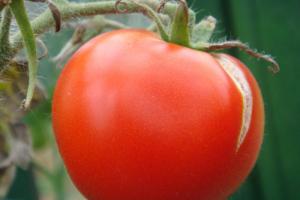Before I tell you about carbohydrates, their role in the body, as well as how many carbohydrates you need to eat to lose weight, I would like to draw your attention to this: for losing weight, it is more important to determine not what and in what quantities you need to eat, but but something that should be completely abandoned. And these are, first of all, quick ones - sugar, products made from white sifted flour, any bun, pastry and sweets, white polished rice. If you want to lose weight, you should completely forget about these products. But you can eat slow carbohydrates. We’ll tell you in what quantities now.
The brain requires about 150 g of carbohydrates per day to perform its function. Most of them enter the body with food, a little more is obtained as a result of the breakdown of its own fats, plus a certain amount is synthesized by the normal microflora of the large intestine.
In order not to take risks and not count on your little friends (microbes), you need to insure yourself and start from this figure - 150 g. This is the minimum that will allow you to maintain normal mental activity in the absence of serious physical activity and not drive yourself into depression due to lack of glucose.
The same amount of carbohydrates - no more than 150 g per day - is recommended by Mark Sisson, a popular paleo diet preacher in the West. In particular, he writes:
“Consuming 300 grams of carbohydrates per day puts you at risk of obesity, diabetes and other diseases.
By eating 150-300 g of carbohydrates per day, you will slowly but surely gain weight (one kg of fat per year). If you do not exceed the figure of 100-150 g per day, you will be able to maintain your weight within normal limits.
Reducing the amount of carbohydrates to 50-100 g per day, you will reduce insulin levels and increase the burning of your own fats.
Less than 50 g of carbohydrates puts the body into a state of ketosis, but this is only allowed for one or two days in order to start the weight loss process, and taking nutritional supplements is mandatory.”
Low carb diets
Popular low-carbohydrate diets, such as Dr. Atkins' diet, are based on the principle of reducing the amount of carbohydrates consumed. At the first stage, patients will have to sharply limit carbohydrates (up to 20-40 g per day), which puts the body into a state of ketosis and starts the process of losing weight. In subsequent stages, the bar is raised to 60 g per day, which helps maintain weight.
The bad thing is that adherents of these diets do not limit the amount of fat they eat, consuming fatty meat products and sausages. In addition, there are other shortcomings, the main one of which I would note is polydeficiency of vitamins and microelements. It is not for nothing that in his works Dr. Atkins indicates a long list of all kinds of food additives that are strongly recommended for use, otherwise the body will have a hard time.
And his own negative example - Dr. Atkins died at 73, and at the end of his life had a weight of 120 kg - does not particularly inspire confidence in this technique, as well as in its Russian analogue - the Kremlin diet. However, the principle itself - eating less carbohydrate foods to cause weight loss - is correct. If you want to lose weight, you need to reduce the amount of carbohydrates you eat.
I don’t see much point in counting carbohydrates in natural foods - vegetables and fruits, which can be eaten in any quantity. Judge for yourself, to gain 100 grams of carbohydrates you will have to eat two kilograms of cabbage or one kilogram of apples. Therefore, you should not be afraid of vegetables and fruits. The only exception is foods high in starch (potatoes and other root vegetables, peas, legumes), the intake of which should be limited and controlled. In the case of store-bought food, the necessary information can be found on the label.
Take, for example, whole grain rye bread. Look for carbohydrate content on the label. Let's say it is 40 g per 100 g of product. To maintain our figure, we are allowed to eat no more than 150 g of carbohydrates per day. This amount is contained in 375 g of whole grain bread.
To lose weight, you should eat less than 100 g of carbohydrates per day, which corresponds to 250 g of such bread.
How much of anything carbohydrate can you eat to fit into the same 40 g figure that is recommended at the first stage of low-carb diets? Quite a lot actually.
For example, two green apples in the morning (200 g = 20 g carbohydrates), 300 g green salad for lunch and 200 g zucchini for dinner (10 g).
There is no point in counting carbohydrates in white bread, pastries and cakes. Let me remind you that any refined and highly processed products are not suitable for you in principle.
Carbohydrate diets have been around for over 20 years, but they are still a source of controversy, especially among those trying to lose weight. The theory of the low-carb diet is quite controversial, and this is not surprising, since it is known that nutritional needs are highly individual, especially when it comes to weight loss.
Because everyone's needs vary, I decided to create this article as a guide to help you optimize your carbohydrate intake and make healthy food choices, whether you're trying to lose weight or training for a long marathon.
What are simple and complex carbohydrates?
- Simple carbohydrates also known as "sugars". These are carbohydrates consisting of one or two “building blocks” connected in a chain. The “building blocks” are glucose, fructose and galactose. Since the chains are short, they break easily, so when they hit the tongue they taste sweet. Foods high in simple carbohydrates include sweeteners (regular sugar, syrup, honey), candies, jellies and jams, fruits, beans and flour.
- Complex carbohydrates called "starches" or "fibers". These are carbohydrates consisting of three or more sugars linked into one chain. They use the same building blocks as simple carbohydrates, but the chains are larger and take longer to break down, so they taste unsweetened. Foods high in complex carbohydrates include bread, rice, pasta, beans, whole grains and vegetables.
DID YOU KNOW? Dietary fiber (fiber) also contains carbohydrates, but they have no energy value because they are not digested or absorbed in the human body.
When you look at the label, you'll immediately see "dietary fiber" and "sugar" listed under "carbohydrates," but have you ever wondered why they're separated? “Carbohydrates” include sugar, fiber and starch. Sugar and fiber are included on the label because it is important for us to know their quantity. And we are usually not interested in the amount of starch, so if you want to find out how much it is contained in food, use the formula:
How to calculate your carbohydrate needs
How many carbohydrates should you eat per day? Carbohydrates are essential to life and are found in almost all foods. To perform basic functions, the human body requires carbohydrates, especially glucose, as it is the preferred fuel for tissues and organs. Glucose is also the only source of energy for red blood cells. Without enough carbohydrates, the body will break down hard-to-synthesize protein in muscles and organs to convert them into useful glucose.
The recommended daily intake of carbohydrates is 130 grams. This is the minimum amount required to optimally nourish the brain, red blood cells and central nervous system of an adult. What happens when you eat too few carbs? When blood sugar levels cannot be maintained within the desired range, the body begins to break down protein (which can be converted into glucose) to bring sugar levels back to normal. And at the same time you lose muscle tissue!
Of course, you should eat more than the recommended 130 grams of carbohydrates per day: Many dietary guidelines suggest that carbohydrates should make up between 45 and 65 percent of the average person's total calories. But our bodies can adapt to different living conditions, so there is no universal indicator.
The 45-65% range is so wide that you may have trouble. If you can't manually calculate your macronutrient needs, let 50% of your calories come from carbohydrates. Or you can follow the general rule:
Rule for calculating the required amount of carbohydrates
45-50% of calories coming from carbohydrates is likely to be a better option for weight loss than a higher carbohydrate diet. If you're vigorously exercising for more than 1 hour a day or doing endurance training such as a marathon, then you'll want to stick to the 55-65% range.
To determine your carbohydrate needs in grams:
- Step 1: Determine what percentage of carbohydrates you need. Select 45%, 50%, 60% or 65%. Convert this number to a decimal (for example, 50% is 0.5).
- Step 2: Multiply your "total calorie goal" by a decimal value. This gives you the number of calories that should come from carbohydrates.
- Step 3: Take the number of calories you received and divide by 4 to get the grams of carbohydrates.
When to Eat a High Carbohydrate Diet
A high-carbohydrate diet is beneficial when performing daily moderate to vigorous aerobic exercise (running, swimming, cycling). Why? Because the more carbohydrates you eat, the more glucose your body stores as muscle glycogen. And the more glycogen, the more fuel you have for the next activity.
For training, it is the absolute amount of carbohydrates consumed (in grams) that matters, not the percentage of total calories. You can use this chart to calculate the amount of carbohydrates you need to eat daily to improve your performance.
Is a low carb diet right for you?
A traditional low-carb diet is a diet that contains less than 40% of calories coming from carbohydrates, and it is natural that many people on such a diet will lose weight and be able to keep it off for a long time. It's popular for good reason, but it's not the only way to lose weight, and it's not for everyone. A low-carb diet (especially a restrictive one) affects your blood sugar levels, which can negatively impact how you feel. This diet can be difficult to stick to. Carb cravings increase initially because your blood sugar levels may drop below what your body is used to. While your body adjusts to the new condition, you may experience unpleasant symptoms. People experience hypoglycemia in different ways and to varying degrees. Signs and symptoms are quite general, meaning they can be caused by other causes. Their intensity varies from mild to completely unbearable. These include: sweating, nervousness or anxiety, chills, irritability, dizziness, headaches, hunger, nausea, fatigue, blurred vision, lack of coordination and more. Depending on your individual response to low-carb foods, you may have one or more of the symptoms described above. If you decide to experiment with this diet, here are six tips to make the transition more manageable and sustainable:
- Monitor your blood sugar levels. It is difficult to predict the human body's response to low blood sugar as it can vary. When starting a low-carb diet, watch yourself for signs of hypoglycemia (see above). If you experience them, eat a small portion of a carbohydrate-rich food, such as a piece of fruit, a few crackers, or a slice of bread.
- A smoother transition to a low-carb diet. Track for at least a week how many grams of carbohydrates you consume daily. Then slowly reduce your target level by 5-10% (or about 30-50 grams daily) each week until you reach your desired goal. Be sure to increase your fat and protein intake to compensate for the energy lost from carbohydrates that have been eliminated from your diet.
- Choose balanced, nutritious foods. Choose high-quality carbohydrate foods such as whole grains, fruits and vegetables, which are full of fiber, vitamins and minerals. Buy high-quality proteins: eggs, legumes, chicken, lean beef and pork. Consume healthy fats in the form of foods that contain monounsaturated and polyunsaturated fats: fish, nuts, avocado and olive oil.
- Don't get yourself dehydrated, drink more fluids. If you cut carbs in your diet, you'll likely eat (and digest) more protein. For optimal digestion and further use of protein, you need a large amount of water.
- Be careful with rapid weight loss. If you've lost more than 1 pound in a week, be careful. You've likely lost more water and muscle mass than fat. Increase your calories to lose weight slowly, but at the expense of body fat.
- Know when to stop and when to return to bread. Be honest with yourself and answer: Are you happy with low carb foods? Are you feeling well? Our bodies can adapt to eating varying amounts of carbohydrates, but for some, excessive sugar cravings and hypoglycemia can be a cause of constant stress. If you feel like your diet is too low in carbohydrates, don't be afraid to take a step back. Aggressively restricting carbohydrates is not the only way to lose weight. Keep this in mind because you'll be more likely to achieve your goals, lose weight and keep it off if you feel good about yourself and are happy with what's happening to your body.
How to choose the best carbohydrates for your body?
It doesn't matter whether you are a healthy person who wants to lose weight or maintain your current weight, or someone who wants to improve their athletic performance. Here are three rules to help you choose healthy carbohydrate foods. One word of caution: If you're an active athlete and want to optimize performance, not all of these rules will help you.
- Choose whole food sources of complex carbohydrates, such as vegetables, beans, nuts and seeds. 100% whole grain breads and pastas, as well as brown rice, should be included in your diet. These foods are a source of fiber, vitamins, minerals and protein.
- Eat less complex, refined carbohydrates, such as white rice, white bread and traditional pasta. These foods are more processed and have healthy nutrients (fiber) removed from them.
- Enjoy simple carbohydrates in moderation. Most sources of simple carbohydrates are considered "empty calories" because they are high in calories but low in micronutrients. They are the likely culprits of a rise in blood sugar. Fruits and milk are exceptions to this rule because they contain beneficial vitamins and minerals.
DID YOU KNOW? Simple sugars in fruit are associated with fiber, and in milk they are associated with protein. Both reduce their effect on blood sugar levels.
Consuming no more than 50 grams of carbohydrates per day is typical for a low-calorie, ketogenic diet. This type of eating plan changes the way your body uses energy. Normally, your body uses carbohydrates as its preferred fuel source. If you limit your carbohydrate intake to 50 grams or less per day, the body instead uses fat as its main source of energy. The Atkins diet is perhaps one of the most famous ketogenic diets. Before starting a low-carb diet, discuss it with your doctor. This type of program may not be appropriate for those who must limit their protein intake due to kidney problems.
Video of the day
Ketogenic Diet 101
While carbohydrates sometimes get a bad rap, it's important to know that they are an integral part of your diet and many nutritious foods contain carbohydrates. The problem arises when you get too many carbohydrates from processed foods such as pizza, cookies and baked goods, which provide some nutrients. On a ketogenic diet, your carbohydrates come primarily from non-starchy vegetables and some fruits. The downside to a diet containing 50 grams of carbohydrates is that it is lower in fiber. However, ketogenic diets are safe and effective for treating obesity when used for up to 24 weeks, according to a study published in the journal Experimental and Clinical Cardiology in fall 2004. You may need to take a fiber supplement until you can increase your carb to ensure you are meeting your fiber needs. Consult your doctor.
Getting started on 50 grams of carbs
The first step is to create a meal plan so you know how many carbs to eat in meals and snacks. If you stick to non-starchy vegetables and fruits that are low in sugar, you shouldn't have any problems staying within your target range. Spread carbohydrates throughout your daily meals. How you distribute your carbs is up to you. For example, try to have 10 grams of carbohydrates per meal and snack if you plan to have three meals and two snacks per day. For each meal you will need a measuring cup/and/or food scale. This is the only way to ensure that you stay within your target range for food.
Low carb fruits and vegetables
To get it all done, check out Vegetables at 5 grams per serving. Nonstarchia vegetables contain about 5 grams of carbohydrates per cup raw or 1/2 cup. You have a wide variety to choose from: asparagus, green beans, broccoli, Brussels sprouts, celery, cauliflower, eggplant, mushrooms, onions, leeks, peas, zucchini and summer squash. Leafy greens also contain 5 grams of carbohydrates per serving.
As with vegetables, examine the carb content of the fruit. An easy way to start is to become familiar with fruits that contain 5 grams or less of carbohydrates. The serving size for fruit is 1/4 cup raw. Fruits in this category include coconut, cranberry, strawberry, raspberry, apricot, honeymoon, cantaloupe and blackberry.
50 gram carb day
If you're not careful, it's easy to eat too much saturated fat on a diet containing 50 grams of carbohydrates per day. Just like eating regularly, most of your fat should come from unsaturated sources. Saturated fat is only found in pet foods, so choose options for your lunch.
Eggs are a staple of the ketogenic plan. A typical breakfast is scrambled eggs, two slices of turkey bacon and 1/4 cup of raspberries. Lunch idea - spicy almond shrimp, 1/2 cup broccoli and 1/2 cup spiralized "zucchini pasta." Snacks help maintain your energy and keep you full between meals. The same principles apply, so think about nutrition when choosing your snack. Several appetizers include celery sticks stuffed with peanut butter, reduced-fat cottage cheese with 1/4 cup strawberries and cucumber slices, topped with tuna and avocado. Steam salmon with 1/2 cup asparagus, 1 cup salad greens and your favorite low-carb, low-fat dressing for a sample lunch idea.
Low carb diets useful because they represent a vitamin-mineral complex. Restricting food allows you to cope with the habit of eating large amounts of flour and sweet products, as well as lose extra pounds.
At the same time, few decide to switch to a healthy diet of plant and animal products for fear of giving up the pleasure of eating food. People don't think about the benefits of a healthy diet for their body.
What is meant by low carbohydrate food?
It is necessary to clearly define what carbohydrates are and how to avoid negative consequences if consumed incorrectly. A diet low in these micronutrients must be tailored to each individual because carbohydrate sources account for 20–30% of daily calories consumed. The body takes most of its energy from pastries, cereals, sweet fruits and starchy vegetables. Such foods contain up to 50–100 g of hydrocarbon chains.
The ketogenic diet is low in sugars and high in fat. Following these restrictions, a person should only eat 20–50 grams of carbohydrates per day to enter a state of ketosis. This is the stage of carbohydrate starvation of cells, when the body begins to burn fat due to insufficient glucose to compensate for energy costs.
With a daily consumption of about 100 g of pure carbohydrates, it is necessary to clearly divide the latter into three meals of 30–35 g. Natural saccharides are the amount of carbohydrates without taking into account fiber and sugar alcohols. The latter do not affect the concentration of glucose in the blood plasma. When determining net carbohydrates, fibrous granules are not taken into account because they cannot be broken down and absorbed in the small intestine.
This knowledge allows, while following a diet low in saccharides, to eat foods of plant origin with a high fiber content - nuts, seeds (cereals), starchy vegetables.
Active followers of a low-carb (ketogenic) diet consume about 20-30 grams of net carbohydrates per day, eating vegetables with low starch content. This takes into account the amount of fiber in the product, the presence of beneficial nutrients, liquid content, and caloric content.
Foods containing 30–35 grams of net carbs
- About 90 g of protein. As the main element, you can take chicken breast in combination with 500 g of non-starchy vegetables. The latter includes broccoli, bell peppers, mixed greens and 1-2 tablespoons of olive oil. The dish as a whole contains less than 35 g of pure saccharides. If you replace poultry with vegetarian starch (beets or turnips), the amount of saccharides in food will increase. However, their quantity will not reach 50 g. To increase the amount of carbohydrates in the dish, it is recommended to add honey or potatoes. They contain 20–25 grams of saccharides per serving.
- Lettuce cups filled with vegetables and some sesame seeds or shredded chicken breast. The latter should be steamed or boiled.
- Fajitas, with a high protein content to taste and a lot of vegetables.
- Sandwiches made from lettuce and boiled chicken breast.
- Empanadas or quesadillas are dishes filled with beef, cheese, herbs, and topped with almond or coconut flour.
- Boiled cauliflower pizza.
To increase the digestibility of low-carb dishes, it is recommended to make cocktails and casseroles from the products.
Foods low in sugar are not always healthy. In particular cases, not only the quantity of carbohydrates is important, but also their quality. To avoid negative consequences from consuming chemically processed, synthetic ingredients, nutritionists recommend not purchasing low-carb products such as protein bars or food substitutes.
They are able to provide the body with fat, protein and at the same time contain a low amount of sugar. These products remain harmful because they contain processed protein powders, refined oils and artificial sweeteners.
If a person is interested in a healthy, low-carbohydrate diet, it is not recommended to get daily diet ideas from the Internet. It is necessary to create an individual menu that is suitable for the body. Cold snacks with a small amount of saccharides can be prepared at home using:
- nuts;
- cereal seeds;
- hummus;
- coconut flour or oil;
- protein powders (whey, bone broth);
- energy powders like instant coffee or cocoa;
- tomatoes combined with cauliflower.
Even pastries and homemade baked goods with a small amount of carbohydrates are suitable. To increase nutrient absorption in the small intestine, recipes that are high in protein relative to saccharides should be used.
When creating a balanced diet for the week, it is impossible to avoid experimenting with new dishes. Nutritionists believe that it is wise to avoid light foods with reduced fat content in combination with artificial preservatives.
To compensate for the lack of fat, manufacturers of such products add flour, sugars, thickeners, emulsifiers and artificial sweeteners, which negatively affect the body. Also considered unhealthy foods are products made from trans fats or hydrogenated oils. At the manufacturing stages, low-quality fats are used to speed up frying.
Top 50 Low Carb Foods
| Product type | Grocery list |
| Low carb vegetables | 1. Broccoli 2. Cauliflower 3. Mushrooms 4. Pepper 5. Fresh or collard greens 6. Asparagus 7. Calais 8. Spinach 9. Green beans 10. Arugula 11. Leeks or green onions 12. Tomatoes 13. Brussels sprouts 14. Avocado 15. Turnip 16. Cabbage 17. Carrots (moderate carbs) |
| Eggs and dairy products | 18. Cageless eggs 19. Full-fat unsweetened yogurt or kefir 20. Raw whole milk 21. Fried cheese, sour cream and heavy cream Low-carb cheeses include
|
| Meat and seafood
Meat products contain zero carbohydrates. The ideal fish option is freshly caught with your own hands. Most shellfish should be avoided due to their high levels of heavy metals. For example, shrimp contain mercury. |
22. Salmon 24. Trout 25. Halibut 26. Sardines 27. Anchovies 28. Mackerel 29. Tuna or cod (in moderation) |
| Nuts and seeds | 30. Cia seeds 31. Flaxseeds 32. Almonds 33. Walnuts 34. Pumpkin, sesame or hemp seeds 35. Cashews and Brazil nuts (and other varieties of nuts) |
| Oils and fats | 36. Coconut, olive, hemp, flaxseed, walnut or avocado oil 37. Ghee 38. Palm oil |
| Seasonings, herbs and spices | 40. Turmeric, ginger, oregano, rosemary, basil, real sea salt, pepper 41. Hot sauces 42. Apple cider vinegar and other fruit vinegars in small quantities (balsamic, white, red) 43. Cocoa powder (raw and unsweetened) 44. Mustard (except honey products) 45. Soy sauce, tamari or coconuts 46. Bone broth (drink without adding salt) |
| Beverages | 47. Green, black, oolong or white tea 49. Herbal decoctions based on ginger root, chamomile, honey plant, mint 50. Fresh pressed vegetable juices or green smoothies |
Is it possible to add starchy vegetables, legumes and fruits to food?
When choosing vegetables that do not contain starch and other polysaccharides and are low in carbohydrates, you must follow several rules:
- Most vegetables that grow above ground are considered non-starchy. There are practically no polysaccharide chains among cellular structures, so such vegetables contain less carbohydrates. These include cruciferous vegetables - broccoli, leafy greens, peppers, chard and cabbage. Spaghetti squash and zucchini squash may be used.
- Tubers and rhizomes growing underground are rich in starch and saccharides compared to fruits. They are represented by potatoes, carrots, turnips and beets.
- In 20% of cases, the first two rules do not work, since there are exceptions. For example, pumpkins grow above the ground and are not rhizomes. At the same time, they have a high sugar content.
If we forget that most root vegetables and fruits do not contain low amounts of hydrocarbons, then the nutrient-rich composition gives us pause. Such products have polysaccharide complexes, but practically do not include simple carbohydrate chains in the form of glucose. Boiled or chopped, root vegetables can be a healthy addition to any diet. Rhizomes replace sweeteners and even cereals. An example is cauliflower rice.
The situation is similar with representatives of legumes. Chickpeas can be processed into flour, while hummus is used as a cream substitute in low-carb diets. Legumes contain a large amount of antioxidants, providing the body with the necessary amount of fiber. They also have a sweet flavor, which helps curb the urge to eat cane sugar unnecessarily.
Due to their beneficial properties and the presence of a vitamin and mineral complex, fruits and starchy vegetables should be included in the daily diet:
- berries - strawberries, blackberries, blueberries or raspberries;
- cherries, cherries;
- cranberry;
- kiwi;
- citrus;
- melon;
- sweet or red potatoes;
- swede;
- beets;
- celery;
- parsnip.
Representative legumes include beans, black beans, and adzuki beans. It is important to remember that when following a low-carb diet, you should not abuse foods high in saccharides.
Reference! It is recommended to soak legumes and grains in warm water for 15–20 minutes before cooking, because this releases protein, vitamins and minerals and facilitates digestion.
Overview of the benefits and mechanism of how a low-carb diet works
In clinical studies, scientists have proven the benefits of diets with low amounts of saccharides. It's difficult to avoid unprocessed, whole food sources of carbohydrates, such as fruits and starchy vegetables. Reducing processed foods in your daily diet without adding granulated sugar or grains helps lead to the following positive results:
- Losing excess body weight in a short time helps maintain health. As soon as glucose stops coming from food, the body begins to use accumulated fat deposits to replenish energy costs. Otherwise, the body processes protein and fat coming from outside.
- The feeling of hunger is dulled, the constant desire to snack on something tasty is reduced. Especially with an unhealthy love for confectionery products with a high sugar content. Low-carb foods increase the feeling of fullness.
- The concentration of glucose in the blood plasma returns to normal. This is due to improved control of insulin production by the pancreas, which is necessary to regulate sugar levels in the body. If you have a prediabetic condition or diabetes mellitus, this positive property is especially important, since the low carbohydrate content helps to avoid complications or worsening of the condition.
- Improved cognitive function and emotional control. An excess of glucose in the body negatively affects brain activity. If sugar returns to normal, nerve cells absorb glucose at a moderate pace. In older people, memory improves and symptoms of epilepsy decrease.
- Depending on individual characteristics, hormonal balance returns to normal. This helps improve sleep quality, reduce fatigue, pain threshold, and accelerate muscle relaxation. The overall tone of the body increases.
- The risk of developing osteoporosis is reduced. The bone structure is strengthened due to the normal absorption of calcium.
- In combination with physical activity, muscle mass increases and slimness appears. The relative indicators of maximum absorption of oxygen molecules by the lungs (VO2 max) and the volume of oxygen at the lactate threshold (VO2 LT) increase.
- Reduces the risk of cardiovascular disease or metabolic syndrome. Vitamin complexes and microelements normalize sugar levels, prevent the formation and promote the destruction of cholesterol plaques on the walls of blood vessels.
Despite their positive effects on the body, some types of low-carb foods have specific effects on tissue structures. Flour and thickeners will not help create conditions for carbohydrate starvation of cells. To follow a ketogenic diet, you need to exclude the following foods:
- Cereals, including barley, corn, oats, rice, wheat. This category includes foods made from whole grain flour - bread, pasta, chips, baked goods (cookies, muffins, cakes).
- Sugar and products containing artificial or natural sweeteners. The latter include honey, cane sugar, and coconut.
- Most commercial goods are imported dried fruits and fruit juices. The exceptions are linden and lemon juice. Other drinks have a high sugar content.
- Ready-made seasonings, sauces, batch mixtures.
- Alcohol products, carbonated and sweetened drinks.
Important! Regardless of the amount of carbohydrates included in your daily diet, the main goal of the ketogenic diet is to consistently consume natural, low-chemical processed foods.
Nutritionists recommend experimenting with low-carb foods over a period of time. This is necessary for creating a daily unbalanced diet. You need to eat a variety of foods, plant and animal.
To maintain a long-term diet, it is necessary to develop an understanding - the fewer carbohydrates the body receives, the lower the risk of health problems. If you use this information in combination with an individual nutrition plan, then the extra pounds will begin to disappear quickly.
It is necessary to eat whole proteins and fats in vegetables, fruits, legumes and grains suitable for the body.
An example of creating a low-carb menu for the day
| Eating | Sample dishes |
| Breakfast | Mexican Scrambled Eggs (Huevos Rancheros)
One serving contains:
To make a delicious Mexican breakfast, you'll need ground beef, eggs, peppers and spices, served on a tortilla with fresh tomatoes, avocado and cilantro. Protein-rich food dulls the feeling of hunger for 4-5 hours, allowing you to feel light all day by improving digestion processes. |
| Dinner | Cauliflower Fried Rice
Per ⅓ cup serving:
This healthy alternative to classic fried rice packs a punch of nutrients. To make puffed rice, you need to chop some cauliflower and grind it in a blender or food processor. Add egg yolks, separated from whites, to the resulting mass. Eggs replace butter and spices. |
| Dinner | Salmon Pecan Pesto
Per serving:
Quick cooking takes only 25 minutes. Pecan Pesto Salmon is loaded with omega-3 and omega-6 fatty acids and whole protein. It is recommended to serve a delicious dinner with a bean salad made from leafy greens, which brings harmony to the taste of the dish. |
Final Thoughts on Low Carb Foods
- Low-carb diets can help people lose weight quickly. At the same time, the products can improve pathological conditions - depression of cognitive functions, chronic fatigue and risk factors for metabolic syndrome or diabetes. Following a diet helps people who are unable to limit themselves in the consumption of confectionery and flour products.
- Low-carb foods include non-starchy vegetables (such as leafy greens or cruciferous vegetables), high-quality fatty acids in the form of coconut oil, olive oil, flaxseed oil, cream and hard cheeses, meats, seafood and eggs.
Carbohydrates are your body's preferred source of energy. In this article, we'll cover the best food sources of carbohydrates and how to determine the carbohydrate content of various foods without using a measuring device!
Of all the macronutrients, carbohydrates have the most controversial reputation. As a result of research over the past few years, nutritionists have come to the conclusion that carbohydrates are one of the causes of obesity and subsequent heart problems. However, in reality, carbohydrates are an integral part of a balanced diet. In general, they are your body's preferred source of energy and are generally essential for maximizing physical performance.
The first thing you need to know about carbohydrates is that they all vary greatly in how quickly they are digested and absorbed. Fast carbohydrates such as refined sugar are called simple carbohydrates. This is the type of carbohydrate your body can use for energy almost instantly. The main caveat is that simple carbohydrates are an unstable form of energy and that after eating them, blood sugar levels rise sharply. Well, it is logical that since fast carbohydrates are easily digested, they also easily accumulate in the body in the form of excess fat.
Complex or slow carbohydrates, such as oatmeal, take a little longer to digest and absorb. However, they do not raise blood sugar levels so sharply and differ from simple carbohydrates in their much higher fiber content.
Below we look at examples of the most nutritious and healthy sources of complex carbohydrates. Instead of snacking on simple carbohydrates like donuts or cakes, we encourage you to opt for slow-release carbohydrates to maintain stable energy levels throughout the day.
If you like sweets and don't want to completely eliminate simple carbohydrates from your diet, you can, of course, eat them, but in moderation and best immediately after training.
Many nutrition plans, especially those designed to improve physical performance or build muscle, call for approximately 50 grams of carbohydrates per meal. Do you find it difficult to immediately imagine what this amount of carbohydrates visually looks like? Take a close look at the pictures, study the calorie content and macronutrient content of various foods - and next time you can easily count out 50 grams of carbohydrates by eye!
Sweet potato
2 medium baked potatoes: 200 calories, 46 g carbs, 0.3 g fat, 4.5 g protein
Sweet potatoes provide the body with long-term energy without excess fat. In addition, sweet potatoes contain calcium, potassium, thiamine, niacin and are one of the best food sources of vitamin A.
Potato
One and a half medium baked potatoes are: 241 calories, 54.9 g carbs, 0.3 g fat, 6.5 g protein
If you don't like sweet potatoes, eat regular ones! This product is much more common in the typical diet. Regular potatoes contain slightly more calories, carbohydrates, protein and fat than sweet potatoes and are more quickly digested and absorbed into the body. But overall, the differences are fairly minor, which is why both types of potatoes are considered excellent sources of carbohydrates.
Boiled oatmeal
One heaped glass: 291 calories, 49.1 g carbs, 6.2 g fat, 10.4 g protein
Oatmeal has been and remains a real must-have in the diet of bodybuilders. This source of slow-release carbohydrates is low in cholesterol and provides a powerful dose of fiber, as well as iron, calcium, riboflavin and folic acid.
Whole wheat bread
2 slices: 200 calories, 44 g carbs, 0 g fat, 6 g protein
Sliced whole grain bread is an inexpensive and convenient source of complex carbohydrates. However, before you buy a loaf of bread, read the label carefully. Please note: whole grains are not the same as whole wheat.
Quinoa (rice quinoa)
One heaping cup of cooked quinoa: 278 calories, 49.3 g carbs, 4.4 g fat, 10.2 g protein
Although in the context of this article we are talking about quinoa as a source of complex carbohydrates, it is worth noting that quinoa is a complete protein and can be used as a source of protein as part of a vegetarian diet. Due to its higher protein content, quinoa has a higher calorie density than other sources of slow carbohydrates. Therefore, if you are meticulously counting calories, pay attention to your quinoa intake so as not to overdo it!
Long grain brown (brown) rice
One cup of cooked brown rice: 216 calories, 44.8 g carbohydrates, 1.8 g fat, 5 g protein
Brown rice is popular with bodybuilders because it is very low in fat, cholesterol and salt. This product provides the body with fiber and many essential microelements such as selenium and manganese. Combine it with some healthy legumes for a great source of complete protein!








